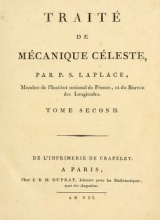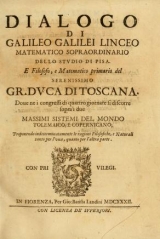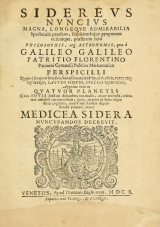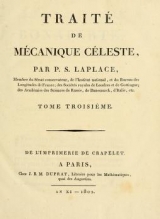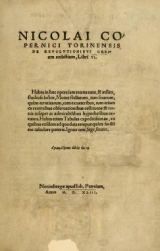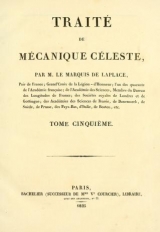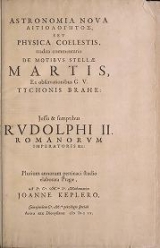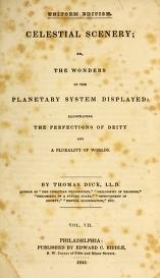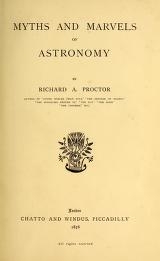Cristiani Hugenii Zulichemii, Const. f. Systema Saturnium

This content is in the public domain (free of copyright restrictions). You can copy, modify, and distribute this work without contacting the Smithsonian. For more information, visit the Smithsonian’s Terms of Use page.
9. Rings of Saturn
Christiaan Huygens and his Systema Saturnium
Christiaan Huygens (pronounced How'-kenz) was born in The Hague, Netherlands, on April 14, 1629. He had the good fortune to be born into a prominent Dutch family with his grandfather, father, and brother serving as secretaries and diplomats to the ruling house of Orange. Huygens did not enter into government service as his interests turned toward science and mathematics. He could do this primarily because his father set him up with an allowance which enabled him to concentrate entirely on his studies. From 1650, when he left college, to 1666, Huygens lived at home and conducted his research with only three brief interludes in which he visited Paris and London.
Huygens's time at home proved very fruitful for his scientific research. He published three mathematical books, produced a manuscript on hydrostatics, wrote a work on collision of elastic bodies, did research on centrifugal force, and invented the pendulum clock. Huygens was also interested in geometrical optics and, together with his brother, experimented with grinding lenses for microscopes and telescopes. Huygens turned his new telescopes to the heavens in 1655 and began making regular observations of the planets, stars, and comets.

Huygens was particularly intrigued by Saturn, mainly because of its puzzling appearance. To an observer using a telescope from the early 17th century, Saturn did not look like the other planets but at times appeared to have unexplainable protrusions extending out from either side. These protrusions were commonly referred to as ansae or "handles." When Huygens initially observed Saturn with his telescope (which provided a magnification of fifty), he did not notice the planet's odd shape as much as a bright star which lined up with Saturn and its handles. After some weeks of observation, Huygens noticed that this star was moving around Saturn, and he realized that he had discovered a moon (later named Titan1) orbiting around the planet. Huygens continued to observe Saturn and realized that in order to learn more about the cause of the planet's odd appearance he would have to construct a telescope with greater magnification and resolution. He and his brother produced two more powerful instruments and with them Huygens was able, in February 1656, to resolve Saturn's handles into a ring around the planet. Huygens wanted to make more observations of Saturn and develop a coherent theory to explain the ring before he published an official announcement. This would take time, however, especially since he was in the middle of work on the pendulum clock. In the meantime, he penned a very brief treatise, De Saturni luna observatio nova [New observation of a moon of Saturn] (The Hague, 1656)2. This work formally announced his discovery of Saturn's moon, and Huygens also noted that he had found an explanation for Saturn's handles and invited anyone else who thought they had a solution to come forward. So as not to give away his explanation, Huygens disguised it in the form of an anagram:
aaaaaaacccccdeeeeeghiiiiiiillllmmnnnnnnnnnooooppqrrstttttuuuuu.
If anyone came forward with the same theory as Huygens, the latter would then reveal his anagram to be:
Annulo cingitur, tenui, plano, nusquam cohaerente, ad eclipticam inclinato [It is surrounded by a thin flat ring, nowhere touching, and inclined to the ecliptic].
Three astronomers attempted explanations of Saturn's ring in the light of Huygens's publication. Giles Persone de Roberval (1602-1675) theorized that Saturn's equatorial regions produced "exhalations" of vapors at various times, and when the vapors were present in large enough quantities, they became visible as extensions of the planet. Giovanni Battista Odierna (or Hodierna, 1597-1660) proposed that Saturn was plum-shaped with two dark areas near the long ends of the planet which made observers think that they were seeing separate handles. The last explanation was provided by the eminent Danzig astronomer, Johannes Hevelius (1611-1689) in his publication, Dissertatio de natura Saturna facie [Dissertation on the nature of Saturn's appearance], (Danzig, 1656). Hevelius believed Saturn to be ellipsoidal in shape with two appendages physically attached to the planet. No one was able to come up with an explanation that mirrored Huygens's.

Huygens confided his Saturnian secret to few people. An important confidant was the well-respected Parisian astronomer Ismael Boulliau (1605-1694). Should anyone else discover Saturn's ring, Boulliau could act as an independent authority, vouching for Huygens's claim to priority. Two years after publication of the anagram, Huygens wrote a letter to his friend Jean Chapelain, a poet and assistant to the secretary of the Montmortian Academy. This academy was actually an informal gathering of men interested in science who met at the house of Habert de Montmor, a wealthy amateur scientist. In his letter of March 28, 1658, Huygens announced his discovery of the ring to Chapelain and gave him authority to present the announcement to the academy, whose members greeted it with much enthusiasm and praise.

Huygens was satisfied with the extent of his research on Saturn by 1659, and his book, Systema Saturnium, was printed and ready for distribution by July of that year. Huygens dedicated the book to Prince Leopold of Medici, a powerful and influential patron of science. Leopold had been upset with Huygens after the latter's publication of his discovery of the pendulum clock, Horologium, in 1658. Leopold had been led to believe that his fellow Tuscan, the highly revered Galileo Galilei, had invented the pendulum clock years before and that Huygens was an opportunistic plagiarist. With the intervention of Boulliau, Leopold became convinced of Huygens's ability and the dedication of the Systema Saturnium to him no doubt increased his opinion of Huygens.

Systema Saturnium opens with the preface to Prince Leopold. In this preface Huygens declares that Saturn, its ring, and its satellite forms a system which supports the Copernican system of a heliocentric universe. The preface is followed by an encomium to Huygens by Nicolaas Heinsius and a poem on the Saturnian system by Huygens's brother Constantijn. The main text begins with descriptions of Huygens's telescopes and some of his early observations of other planets, stars, and the Great Nebula in Orion. Then his discussion turns to the discovery of Saturn's moon and the determination of its orbital period around Saturn. Huygens derives a value of 15 days, 23 hours, and 13 minutes (not far off from the modern value of 15 days, 22 hours, and 41 minutes).

Finally, on page 34, Huygens begins the discussion of the changing and unusual nature of Saturn's appearance. He discusses earlier observations of the planet going back to Galileo, notes how these observations suffered from the use of inadequate telescopes, and goes into some detail on the hypotheses of Hevelius, Roberval, and Hodierna. After arguing against these explanations, Huygens offers his theory of a thick solid ring circling Saturn at its equator and in equilibrium under Saturn's gravitational force. He then goes into detail about how the plane of the ring is tilted 20 degrees to the plane of Saturn's orbit and that the ring maintains a constant orientation as the planet orbits the Sun. This means that the ring's angle changes with respect to us and thus explained the varying appearance of Saturn. When the ring was edgewise to the Earth it would seem to practically disappear and then slowly the angle would change and the rings would open themselves back up to us. The book ends with Huygens's observations of all the planets and his calculations of their sizes in relation to the Sun.
Reaction to Systema Saturnium was generally negative. Although the Montmortian Academy applauded the results, that opinion was in the minority. Huygens's colleague Boulliau was generally supportive but felt that the ring should still be visible even when edge-on to the Earth. Prince Leopold held back his support influenced by his consultation with Boulliau as well as his difficulty in accepting the existence of a heavenly ring. Other astronomers, particularly Hevelius and Riccioli, were unconvinced. Then, in April 1660, Huygens was warned that a work was in production by Eustachio Divini (1610-1685), an Italian telescope maker, which would attack him in print. This brief treatise appeared in August 1660 as Brevis annotatio in Systema Saturnium Christiani Eugenii... [Brief comment on Christian Huygens's Systema Saturnium] (Rome, 1660). It was probably not written by Divini, but most likely by Honoré Fabri (1607-1688), a Jesuit astronomer in Rome. The Divini/Fabri treatise pulled no punches and attacked Huygens's characterization of Divini's observations of Saturn, spoke ill of Huygens's telescopes, described his ring theory as fantastic, called some observations "pure fiction," and attacked his Copernican arguments. It then argued in favor of Fabri's theory that Saturn was accompanied by four satellites: two dark ones near the planet and two bright ones farther out. The darker satellites partially obscured the brighter ones at times, creating the appearance of handles on each side of Saturn.
Huygens did not wait long to answer Divini/Fabri's attacks. He quickly prepared a reply which was published in September 1660 as Brevis assertio Systematis Saturnii sui... [Brief defense of [Huygens's] Systema Saturnium] (Florence, 1660). Huygens countered that their arguments had no basis in truth. He pointed out inaccuracies in their observations which could only be explained by the use of inferior telescopes. Divini/Fabri riposted with a second work, Pro sua annotatione in Systema Saturnium Christiani Hugenii adversus eiusdem assertionem [Defense of [Divini's] comments on Huygens's Systema Saturnium and counter to Huygens's assertions] (Rome, 1661). This work tried to back up their original claims, but to little effect. It was noticeably weakened by the fact that their explanation of Saturn's handles now required a total of six satellites orbiting the planet. Huygens thus did not feel a strong urgency to respond to Divini/Fabri's latest work, especially since there was now growing support for his ring theory. One of his most important critics, Hevelius, accepted the ring theory after reading Huygens's Brevis assertio. The prestigious Accademia del Cimento in Italy performed a series of experiments with models and found that Saturn's appearance was explained most satisfactorily with Huygens's ring theory (except that they, like Bouillau, disagreed with the concept of a thick ring). And in 1665, Huygens heard that even Fabri, finally using a good telescope, accepted the ring theory although he steadfastly refused to believe that it supported the Copernican view of the universe.
The concept of a ring around Saturn was generally accepted by 1670. What remained a mystery was the exact nature of the ring. Was it a solid thick ring as Huygens proposed? Always a point of contention, Huygens's theory was weakened by the discovery of a gap in the supposedly solid ring by Giovanni Domenico Cassini, the director of the Paris Observatory, in 1675.3 Cassini also believed that the ring was  actually composed of a large number of small satellites orbiting Saturn. In 1785, Pierre Simon, Marquis de Laplace demonstrated the mathematical instablility of solid rings orbiting around Saturn. James Clerk Maxwell wrote a mathematical essay in 1857 which destroyed the notion of a solid ring. His proof noted that the only possible explanation for the ring was that it was composed of small particles orbiting the planet and dense enough to give the appearance of a ring. Finally, in 1895, Maxwell's theory was proved by James E. Keeler at the Allegheny Observatory in Pittsburgh. Keeler used a spectroscope to show that the rings were actually rotating around Saturn and that the velocity of rotation could only be explained by a ring like the one described by Maxwell. Today, thanks to investigations made possible by unmanned spacecraft, we now know that the ring system is 270,000 km in diameter, but only a few hundred meters thick. There are four main ring groups and three more faint, narrow ring groups separated by gaps called divisions (the largest one being the Cassini Division). The rings are composed of particles which range from centimeters to tens of meters in size and are mainly made of ice (though there are traces of silicate and carbon minerals).
actually composed of a large number of small satellites orbiting Saturn. In 1785, Pierre Simon, Marquis de Laplace demonstrated the mathematical instablility of solid rings orbiting around Saturn. James Clerk Maxwell wrote a mathematical essay in 1857 which destroyed the notion of a solid ring. His proof noted that the only possible explanation for the ring was that it was composed of small particles orbiting the planet and dense enough to give the appearance of a ring. Finally, in 1895, Maxwell's theory was proved by James E. Keeler at the Allegheny Observatory in Pittsburgh. Keeler used a spectroscope to show that the rings were actually rotating around Saturn and that the velocity of rotation could only be explained by a ring like the one described by Maxwell. Today, thanks to investigations made possible by unmanned spacecraft, we now know that the ring system is 270,000 km in diameter, but only a few hundred meters thick. There are four main ring groups and three more faint, narrow ring groups separated by gaps called divisions (the largest one being the Cassini Division). The rings are composed of particles which range from centimeters to tens of meters in size and are mainly made of ice (though there are traces of silicate and carbon minerals).
The donor
The Smithsonian Institution Libraries copy of Systema Saturnium was part of Bern Dibner's Burndy Library. Bern Dibner (1897-1988) was born in the country now known as Ukraine and immigrated to the United States in 1904 settling in New York City with his family. Upon graduating from the Polytechnic Institute of Brooklyn in 1921, Dibner embarked on a career in electrical engineering in which he patented a number of inventions and founded the Burndy Engineering Company in 1924. Electrical engineer, book collector, and philanthropist, Dibner was was fascinated by both art and technology. His intellectual curiosity was sparked through study of the work of Leonardo da Vinci, and Dibner began to collect a small library of works about Leonardo.
Over the years Dibner's interests expanded to include the history of electricity, the history of Renaissance technology, and finally all areas relating to the history of science and technology. In 1941 he formally set up the Burndy Library "to advance scholarship in the history of science." To house his collection of over forty thousand volumes by 1964, Dibner set up a library building in Norwalk, Connecticut. In 1974 Bern Dibner donated one-quarter of the Burndy Library's holdings to the Smithsonian Institution to form the nucleus of a research library in the history of science and technology to be located in the young (established 1964) National Museum of History and Technology (now the National Museum of American History). The library opened its doors in 1976 as the Dibner Library of the History of Science and Technology.
Heralds of Science
The Systema Saturnium is one of 200 books known as the "Heralds of Science." Bern Dibner selected the Heralds as the most significant titles in the formation and development of Western science and technology. They were presented (with apologies for other important works omitted) in his classic book, Heralds of Science (Norwalk, Conn.: Burndy Library, 1955; reprinted in 1969 by Cambridge, MA: MIT Press; revised edition in 1980 by Burndy Library and Washington, DC: Smithsonian Institution). Dibner chose eleven general subject categories and briefly described each of his choices of the greatest works that represented those disciplines. Systema Saturnium is in the Astronomy category and is Herald number 9.
The book
Christiaan Huygens. Systema Saturnium, sive de causis mirandorum Saturni phaenomenon, et comite ejus planeta novo [The System of Saturn, or On the matter of Saturn's remarkable appearance, and its satellite, the new planet]. Hagae-Comitis [The Hague]: Ex Typographia Adriani Vlacq [from the press of Adriaan Vlacq], 1659. Six preliminary leaves, 84 pages, woodcut and engraved illustrations, one folding engraved plate. QB671.H98
Cover: Leather
Dimensions: 20 x 15 cm.
Collation: ( )4πB2 A-K4 L2.
| [(1)r] | [i] | Title page |
| [(1)v] | [ii] | Blank page |
| (2)r-πB1r | [iii]-[ix] | Dedication to Prince Leopold |
| πB1v | [x] | Heinsius's poem lauding Huygens |
| [πB2r] | [xi] | Constantijn Huygens's poem on the Saturnian system |
| [πB2v] | [xii] | Errata |
| A1r-L2v | [1]-[8]4 | Main text of work |
| --- | [Plate] | Folding plate bound between pp. 32 and 33 |
Ronald Brashear
Curator of Science and Technology Rare Books
Special Collections Department
Smithsonian Institution Libraries
May 1999
1 Saturn's moons were not named until the 19th century. Sir John F. W. Herschel proposed the modern system of naming them after the mythological Titans.
2 The two-page treatise, De Saturni luna, was also made available by being published in Pierre Borel's De vero telescopii inventore... (The Hague, 1655-1656). The same printer, Adriaan Vlacq, produced both works. It is located on pages 62-63 of De conspiciliis, book two of De vero telescopii inventore.
3 Cassini is also known by his assumed French name of Jean Dominique.
Sources
- Alexander, A. F. O'D. The Planet Saturn. A History of Observation, Theory and Discovery. London: Faber and Faber, 1962.
- Bell, Arthur E. Christian Huygens and the Development of Science in the Seventeenth Century. Reprinted edition. London: Edward Arnold & Co., 1950.
- Bos, H. J. M. "Huygens, Christiaan." In Dictionary of Scientific Biography, edited by Charles Coulston Gillisipie, vol. 6, pp. 597-613. New York: Charles Scribner's Sons, 1972.
- Hatch, Robert A. "Between Friends: Huygens & Boulliau." In De Zeventiende Eeuw: Cultuur in de Nederlanden in Interdisciplinair Perspectief12 (1996): 106-116.
- Huygens, Christiaan. Observations Astronomiques. Système de Saturne. Travaux Astronomiques. 1658-1666. Vol. 15 of Oeuvres Complètes de Christiaan Huygens.The Hague: Martinus Nijhoff, 1925.
- Van Helden, Albert. "Eustachio Divini versus Christiaan Huygens: A Reappraisal." Physis12 (1970): 36-50.
- Van Helden, Albert. "The Accademia del Cimento and Saturn's Ring." Physis15 (1973): 237-259.
- Van Helden, Albert. "Saturn and His Anses." Journal for the History of Astronomy 5 (1974): 105-121.
- Van Helden, Albert. "'Annulo Cingitur': The Solution of the Problem of Saturn." Journal for the History of Astronomy5 (1974): 155-174.
- Van Helden, Albert. "A Note About Christiaan Huygens's De Saturni Luna Observatio Nova." Janus 62 (1975): 13-15.
| List of Figures and Illustrations: Systema Saturnium by Christiaan Huygens | ||
| Page | Figure | |
| 6 | Huygens's 1656 observations of bands on Jupiter (top two) and Mars (bottom). | |
| 8 | Huygens's 1656 observation of the nebulosity in the sword of Orion (now called the Great Nebula in Orion or M42). | |
| 9, 11-17, 19-25 | Huygens's series of observations of Saturn and its satellite [Titan] from 1655 to 1659. | |
| 10 | Huygens's March 1655 observation of Saturn showing how he saw Saturn's "arms" (as he called the extensions) to be a little thicker at their ends than where they were "attached" to the planet. | |
| 11 | Huygens's 1656 observation of Saturn with a larger telescope (23 feet focal length) than before showing the "arms" and a shadow across the planet that joins the two arms. | |
| 16 | Huygens's observation of Saturn in early 1656 when the planet's "arms" were not visible. | |
| 18 | Huygens's observation of Saturn on October 13, 1656, showing the form he predicted it would have. | |
| 21 | Huygens's observation of Saturn on December 17, 1657, showing the "arms" open as if they were handles, the first time he had seen them that way. | |
| 24 | Huygens's observation of Saturn on February 12, 1659, showing the "handles" (his new term for the appendages) more open than before. | |
| 27 | Diagram of a representation of the orbit of the satellite [Titan] with Saturn at the center. | |
| 28 | Diagram of the orbits of the Earth (GF), Saturn (ABC), and the satellite [Titan] around Saturn (NHK and DEL). The Sun is at the center (S). | |
| Plate between pages 32-33 | Observations of Saturn by others prior to Huygens. I is an observation by Galileo in 1610. II is one by Scheiner in 1614. III is one by Riccioli from 1641-1643. IV-VII represent suggestions by Hevelius based on his theories. VIII and IX are observations by Riccioli from 1648-1650. X is an observation by Divini from 1646-1648. XI is one by Fontana in 1636. XII is one by Gassendi in 1646. XIII is from observations by Fontana and others from 1644-1645. | |
| 47 | Huygens's concept of the actual form of Saturn and its ring. | |
| 49 | Diagram of the relation of the path of Saturn (ADC) to that of the ecliptic and the ring plane (EC) on March 25-27, 1655. | |
| 50 [42] |
Top: Diagram of the relation of the path of Saturn (LMNO) to that of the ecliptic (RQ) and the ring plane (POQ) on April 9-12, 1655. Bottom: Diagram of the relation of the path of Saturn (ST) to that of the ecliptic (XY) and the ring plane (VSX) on May 27 and 31, 1655. |
|
| 51 | Diagram of Saturn as seen in the telescope's field of view on October 13, 1656, indicating how the planet travels in the same direction as the rings. | |
| 55 |
Top: Diagram showing how Saturn's appearance to us changes due the changing positions of the Earth (E) and Saturn as they orbit the Sun (G).
Bottom: Huygens's observation of Saturn presenting its rings to us at their greatest inclination. |
|
| 60 | Repeat of figure at top of page 55. | |
| 63 | Diagram of the orbit of Saturn (ANC) and the Earth (DEF) around the Sun (L) for the purposes of describing how Saturn's rings will vanish and produce Saturn's "round phase." | |
APA Citation
Huygens, Christiaan. Cristiani Hugenii Zulichemii, Const. f. Systema Saturnium. Hagae-Comitis: Ex typographia Adriani Vlacq. Retrieved from https://doi.org/10.5479/sil.90677.39088015653702
MLA Citation
Huygens, Christiaan. Cristiani Hugenii Zulichemii, Const. f. Systema Saturnium. Hagae-Comitis: Ex typographia Adriani Vlacq, https://doi.org/10.5479/sil.90677.39088015653702
Chicago
Huygens, Christiaan. Cristiani Hugenii Zulichemii, Const. f. Systema Saturnium. Hagae-Comitis: Ex typographia Adriani Vlacq, doi: https://doi.org/10.5479/sil.90677.39088015653702

|
Add this page to your Mendeley Library |

|
Get Zotero Plugin |




